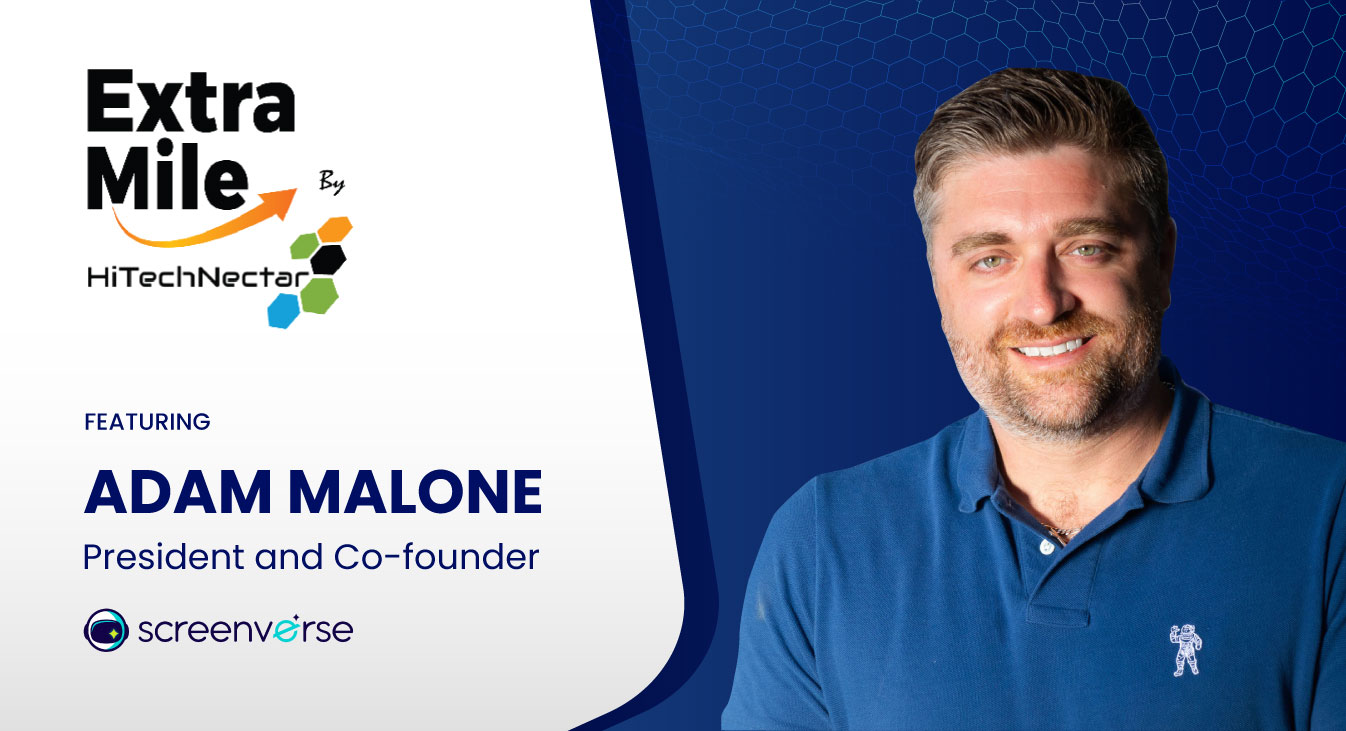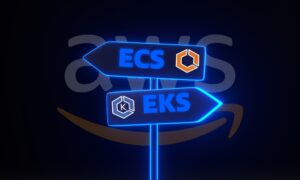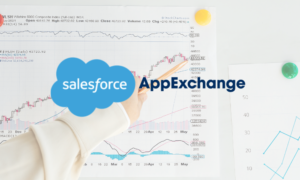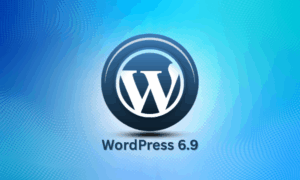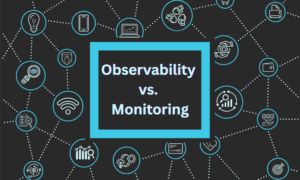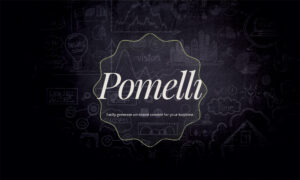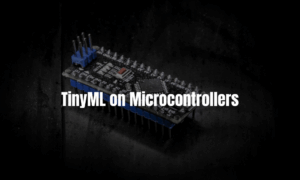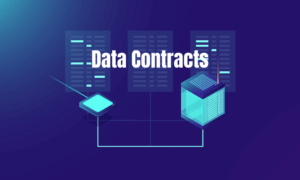Host: Hello everyone, in the second episode of Extra Mile by Hitech Nectar, we are featuring a thought leader, Adam Malone. He is the president and co-founder of Screenverse and we are excited to have him with us. Adam is known for his expertise in marketing, network development and finance at Screenverse.
With over 13 years of experience in the out-of-home media sector, Adam has an impressive track record that we are eager to explore. If you are familiar with Doe Media, then you know its significant identity and Adam played a key role there. He was instrumental in creating new products, forming partnerships and venturing into international markets.
Prior to co-founding Screenverse, Adam served as a client director at Wilkins Media, a leading out-of-home media agency. With his extensive experience and talent for innovation, Adam is here to share his journey and insight with us today. Adam, we are absolutely thrilled to have you on the show.
Adam: I’m really happy to be here. I appreciate the opportunity and hello to everyone.
Host: So, can you share your journey from marketer to co-founder and president of Screenverse? What motivated you to venture into the industry?
Adam: Yeah, I really appreciate the question. I think the out-of-home industry is a very old industry and it’s a notoriously difficult industry to really break into. I like to joke that the best way to own or run a billboard company is to inherit it.
At least in the United States, you have many multi-generational businesses that have really stood the test of time and it’s a really wonderful characteristic of the industry at large. My entrance into the industry, I didn’t marry into it like many people do. I wasn’t born into it, but I was attracted to it as part of my work at DoMedia.
So, I was really attracted to DoMedia as a startup. My mentor was an investor and actually chairman, still to this day, chairman of that company. And then many of my smartest, most talented friends in Columbus, Ohio, when I graduated from college, had started working there.
I really gravitated to the company more than I did the industry. Now, spending any amount of time and especially a lot of time in an industry like this, you better come to love it. My journey within out-of-home, I started at DoMedia.
I really saw that there were some problems in the market that I thought technology could help fix and we can talk about that in a bit. I really believed in the vision of that company and frankly still do. It’s a going concern and we’re customers at DoMedia.
We use those products as well. But I really saw the potential of the industry and an important thing for me early on was I formed an appreciation for the media itself. I saw the beauty of it.
I would be walking through New York City and I’d literally stop and stare at a painted wallscape or a beautiful Times Square. It’s sort of like going to Mecca when you’re in our industry just to be surrounded by these bright lights and the beautiful creative and just seeing the peak of what this media can be. And even not at the peak, just the normal, everyday, hard-working, out-of-home media that you encounter on the corner of Main and High in any city in the world, it really is easy, at least it was for me, to develop an appreciation for the artistry, the usefulness, even a really beautiful awning in the front of a shop.
It really captures the attention, it captures the imagination, and it makes you want to go and walk inside the store. And so once I really developed the appreciation for the beauty and the artistry in the media, then I came to care about it a lot more. And then once I formed all the relationships that I have, you know, that’s why I’m probably never going to work in another industry, you know, I’m totally captured.
Host: Yeah, that sounds great. As you said that your mentor and investor and chairman in your previous companies seem, your career journey sounds like a thrilling adventure. What sparked your passion for the digital out-of-home industry?
Adam: Yeah, so within the outdoor industry that I’ve spoken about a little bit, digital out-of-home is where a lot of the dynamism is. That’s where a lot of the growth is, that’s where a lot of the new technologies are being developed and deployed. And there’s really two different sections of digital out-of-home innovation.
There’s the hardware and the software of actually building and operating digital billboards, digital spectaculars, small screens, big screens, you know, screens that look like television screens that are embedded in kiosks and things like that. There’s just so many new form factors emerging in the space. And one of the things I love about it is the input costs on all of those hardware and software are going down over time.
So you’re getting more and more of these high-end commercial grade, digital screens, digital signs, digital billboards that are much more accessible for companies to build and install. And so it’s really as the cost curve, as we slide down the cost curve, you’re going to see a proliferation of screens that are going to crop up in these cities and lifestyle centers and malls and airports. There’s going to be more and more opportunities for companies to build and deploy and operate screens.
The second key on that is connectivity. So everything has to have Wi-Fi or it has to have cellular connection in order to be centrally controlled, in order to be programmatically enabled. And so that kind of dovetails into the second part of digital out-of-home innovation, which is these platforms like a Vistar Media, like a Place Exchange, like Vue in the UK and many others, HiveStack, that are building the connective tissue and the layer between the demand side, the buyers, the advertisers who are used to spending hundreds of billions of dollars on digital ads in the digital world. Now they’re being able to spend hundreds of millions of dollars on ads, on digital screens in the physical world. And that is really the combination of those two forces is really where a lot of the excitement in my space is.
And so if you can choose an area of the industry in which to participate, I’ll go ahead and recommend to your audience, choose the growing part of the growing part, choose the most dynamic area. By the way, it’s more fun and there’s more opportunity, there’s more economic opportunity, there’s more margin, there’s more chance to really grow and thrive and build a great company. And so industry choice is important, but also choosing a specific area in which to focus is very valuable for young entrepreneurs in particular.
Host: As you said, the industry has come a long way. How has the out-of-home and digital out-of-home advertising landscape evolved since you began your career? What significant changes have you witnessed?
Adam: I’ve witnessed a lot of them. I remember back to some of my first days at DoMedia, you know, the first thing we built at that company was a searchable directory of billboard companies. And believe me when I tell you, it was very difficult to find, and it was my job at the time to find, okay, who are the 5, 6, 7, 10, 11 billboard companies in Tucson, Arizona, or in, you know, Springfield, Missouri, or in, you know, Lansing, Michigan.
And so we’d have to search, you know, online, we’d have to search in, you know, something like the yellow pages, if you remember those, we’d have to call around, we’d call chambers of commerce in each of these and just say, hey, do you have any record of any billboard owners there? Do you have their phone number? We’d like to call them and we’d like to try to get them to, you know, sign up and create a company account and list their media within the DoMedia database.
And just that foundational work of let’s get everything available online in a searchable way, that was really step one for the development of DoMedia and something that looking back now, like, what do you mean it was hard to who owned what in which markets? That seems like that’s probably always been the case, but fundamentally the issue about access to the inventory, how easy is it to find it, to plan it, to buy it, to measure it, you know, these are issues that still persist, but it is important to look back, you know, I can look back to 2009, but many of my, you know, colleagues can look back even further and has seen the evolution and has seen the progress, but there’s still a long way to go, you know, to be able to access inventory easily, to be able to compare it apples to apples, to be able to buy scaled campaigns on a CPM basis that’s fully measured in the exact same way across all the different formats and all the different vendors.
I mean, these are challenges that innovative technology companies like a DoMedia, like a HiveStack and others are tackling every day. And there’s still a lot of work to go before there’s really kind of a workflow parody with some of these other media formats. So, you know, look, I’m biased.
I love this industry. I see the value in it. I see the creativity.
I see the effect it has on people, you know, no ad blockers in the physical world, you know, and I’m not sure people would opt into it because, you know, these, you know, that the Apple wall scape that is in most downtown corridors, that adds to the city skyline. It adds to the beauty of the place. And so I think that there are some things that are still getting in the way of the adoption of out of home and digital out of home at the scale that I believe it deserves, but I think we’re chipping away at it.
And I think we will eventually get there. There will be a single currency that’s used to measure, to predict the behavioral patterns of audiences as they move through physical space. And then also be able to say, Hey, we thought that this number of people and this distribution of audiences, we’re going to be in this place.
And what we actually saw is that it was a little higher, or we actually saw as a little lower and to be able to account for that. So just just incremental innovation, I think stacked upon itself. You know, I think there’s this law about compounded interest.
And I think as an industry, if we keep getting a little bit better all the time in these areas, it will eventually break through and it’ll eventually pay off big.
Host: The advertising industry has been a game changer. As you said, how has it specifically influenced the digital out of home landscape and what is the role in this transformative process?
Adam: It’s a really good question. And I think it’s true. I think it has.
You know, I talked about evolution in the previous question, but I think the programmatic opportunity has really revolutionized things. It’s really accelerated opportunity for media owners. It’s really accelerated opportunity for omnichannel advertisers who they want to be able to move fast.
They want to be able to take advantage of moments in the zeitgeist. So, if they have, you know, it just happened, but the CrowdStrike outage just happens and it’s causing all this disruption and there’s this really negative sort of experience, collective experience we’re all sharing. This is a global zeitgeist moment.
And, you know, some of the really smart marketers took advantage of that and created and deployed ads that took advantage of the blue screen of death and had similar text and promoted their solutions, their companies, and just sort of were able to adapt and deploy and take advantage of that moment. Well, you know, I saw that on LinkedIn. I saw that on X.
I saw that, you know, everywhere as well as in the physical world. And so there’s just such an incredible opportunity for advertisers to move quickly, to try things. They don’t have to commit to a multi-month, you know, campaign.
You know, you’re not printing and stretching and installing vinyls everywhere. And so, you know, in that world, you have to be sure that a message is going to resonate and that the message is going to work and it’s going to be relevant for three months or six months or 12 months. In a programmatic world, you can try things, you can make mistakes, you can afford to make mistakes, and you can dial things up when they’re working and dial things down when they’re not.
And I think the operational overhead of the out-of-home industry prior to being digital and prior to being fully connected in the cloud, it was just really hard to test, to really try to move quickly, to be flexible, to take things down if they weren’t working, to make changes. And so it’s really opened up this whole new use case for advertisers. And I think that’s benefited really all of the companies on the supply side.
But in particular, I think, you know, and I’ve got some friends at some of the big out-of-home companies, and I respect them tremendously. I think, you know, Lamar, Clear Channel, and Outfront are some of the best companies on the planet. I think Lamar is a 140-year-old business, and yet somehow it’s still one of the more innovative companies in our space.
It’s an incredible thing. But the traditional buy-sell ecosystem was really dominated by those guys. They had all the relationships at the agency.
They had the working histories together. They had some of the best inventory and some of the best markets. And so they’re very likely to win, you know, their fair share, maybe even more than their fair share of the national advertising dollars.
And I think with programmatic, it’s democratizing access to some of those budgets. And so smaller, more nimble, more niche digital out-of-home and digital place-based networks can go and compete and win, really, for the first time. And that really energizes us because we like builders.
And so, you know, we work with, you know, 15 media owners who have built, you know, and some of them started really small when they started working with us. We have a residential network out of Chicago, a couple of brilliant entrepreneurs who had 300 buildings in Chicago when we signed with them. And, you know, now they have 8,000 buildings in the top markets in the country.
And it’s been a wonderful relationship. We do the programmatic sales for them. They continue to invest and build and grow the network.
And they’re awesome at what they do. And we’re awesome at what we do. But fundamentally, we wouldn’t collectively have that opportunity to take a 300-screen network and turn it into an 8,000-screen network if it weren’t for the programmatic pipes, for the ability for data and inventory and marketing messaging to sell.
You know, if we’re relying on human beings and human relationships, well, it’s hard to form a relationship with a media buyer, a planner, strategist, when you only have 300 screens, you know? Like, they just don’t have the time to answer all those phone calls and really give you a shot. But with these technologies and the DSPs and the SSPs, you know, we can go and compete and win at 300 screens and then all the way up to 8,000.
And now, you know, many of our partners have reached the scale that we don’t have to only make the programmatic sale. That’s not the only avenue we have anymore. You know, we can do bigger direct deals.
We can package things together because the programmatic revenues have allowed that investment and that growth. And now we’ve got some hefty, you know, some hefty networks that can stand on their own and do well in local, regional, national direct sales, as well as programmatic. And so, look, what’s good for our partners and what’s good for the media owners, we’re always going to try to support.
And programmatic has been a really excellent way for these smaller companies to validate their business, their business models, to prove the economics, to allow them to get either more investment or to grow organically and then start to be able to challenge some of the bigger guys in their markets.
Host: So, as you said, you like building and builders. So, starting Screenverse during a lockdown when people were not leaving their homes must have been a challenge. How did you navigate this challenge and what strategies did you employ to succeed?
Adam: Yeah, I mean, what were we thinking? So my partner and I, we founded Screenverse in April of 2020. And, you know, and so really COVID became a major thing in March and we all kind of recognized, oh, you know, airports are shut down, malls are shut down.
You know, I was working at an ad agency. We had to pause all of the big campaigns we were doing. I had a, it’s a funny story now, but it was a really, you know, sad story then.
You know, I had a client, one of my first big clients at the agency, a tourism client, and they were in Times Square and I did this, you know, big sale and I was making this nice commission and got this young family and it’s, you know, it was important. And the client called me in March and said, hey, you know, we’re running this, you know, Visit Montana tourism thing in Times Square. Like, should we be in Times Square right now?
Like, there’s nobody in Times Square. People aren’t allowed to be in Times Square. And I’m like, no, you really, you really shouldn’t.
This is, and by the way, even if we captured the attention of people in Times Square, they couldn’t fly. And so, you know, you’re, you’re canceling, you know, really the whole business was falling apart. And I certainly wasn’t the only one.
I, you know, looked around at all my colleagues and, you know, what are we going to buy? What are we going to sell? And so just remember that that was what was happening.
You know, there was a lot of turmoil that was going on and people reacting and freaking out and, and, and companies furloughing their employees and, you know, trying to preserve cash and trying to, to renegotiate contracts to, to keep the lights on. So against the backdrop of that, my, my co-founder and I, and bless his heart for doing this. He drove down, I live outside of DC.
He drove down from New York city and we actually sat in a coffee shop where we probably shouldn’t have been, but we were sitting seated in a coffee shop for about four hours. And he convinced me, he said, you know, look, he’d been talking about starting Screenverse for three or four months. You know, I was, I was going to advise him potentially invest in the company.
And he convinced me, Hey, this is actually, you know, the, the, the core, the, the fundamentals of Screenverse as he envisioned them were, you know, access to great inventory. We have to be able to identify and secure the media sales rights to valuable media inventory, right? He has good experience evaluating that.
I have a lot of experience evaluating that. So we felt pretty good about our ability to go and get inventory. The second sort of the key lever of Screenverse in our success then, and certainly now is people are we going to get, be able to assemble a group of talented people who really care about each other and care about this mission and care about our partners and really want to be leaders.
Is it going to be easier or harder to get inventory to get these people? And what we decided, what we recognized is with all the turmoil in the market, we thought it was actually going to be easier to go get the sales rights, easier to go recruit people who are being fired, who are being furloughed, or at the very least, we’re really worried about what was next for them. You know, really the, you know, would the advent of programmatic adoption, the accelerated or slow, slow down, slow down.
And I think from my recent agency experience, I realized like that flexibility we talked about, the ability to change messaging easily, the ability to turn things up and down as audiences and behavioral and sit in the situations change on the ground. We made the bet like the future is going to be pulled forward and programmatic. The adoption rates are going to go up and that’s going to be foundational to the success of the launch of Screenverse.
And so, you know, he kind of convinced me in that day and we made the decision to start the business. Now, what we actually did in terms of our go to market, which in hindsight, I think worked out well, but at the time was kind of risky, is we identified three media owner partners who had inventory in what was known then as essential businesses. Remember that?
You had essential businesses and essential workers that were allowed to remain open and everything else was really closed. So pharmacies, convenience stores, grocery stores, these places were open and essential to the functioning of society in those times. And so we signed three partners in short order and they were in Kroger’s and Albertson’s, like the major grocery stores in the U.S. We signed a partner, Pursuant Health, was in 4,600 Walmarts in the pharmacy section, in the health and wellness section, a particularly good placement in a particularly important retailer. And then we signed a company called Corner Media that has 55-inch digital displays in and around these, you know, next to a Whole Foods or next to a Trader Joe’s or next to a Starbucks or next to these other essential businesses and retailers. And so our big bet was that the dollars are going to follow the audience. And if we, you know, secured inventory where we knew audiences were going to be, we’d have a chance.
Second thing we did is we invested in a data set called Placer.ai that was really good and still is really good at telling you the traffic patterns day over day over day to major retail. So we could walk into an agency, we could talk to a brand and we could go, hey, we have 4,600 Walmarts and let me show you what traffic looked like four days ago, five days ago, six days ago. So at the beginning of the pandemic, there’s a big drop and then it bounced a little bit and then here’s where it is now.
And what I’m selling you is the opportunity to be in this place, in this space, reaching this audience. And I’m not going to price it based on last year’s data or some estimate that I’ve just made up. I’m going to price this based on four days ago, how many people actually went to these places and spaces, et cetera.
So we bought that data set on a credit card and luckily we only had to pay the first $15,000 up front and the next six months later. But that investment really paid off. And then the third thing was embracing the programmatic platforms, really leaning in on Vistar in particular as an SSP.
As place exchange continued to build itself, we were first in line, really helping them build out, become a major player in that. And still to this day, Hive Stack and Broadside Reach and these others that are emerging, we really want to be the first in line, early adopters, data users, et cetera, on these tool sets. So those three things ended up being the foundation of Screenverse.
We sold very effectively in those venue types for those media owners. And then that allowed us to go and win new business, basically add more and more partners to the portfolio. And then fast forward now and we’re 90,000 screens and 25 different venue types.
And we’ve got 15 individual media owner partners that we’re thrilled to work with. It’s been a really fun evolution, but fundamentally it’s about access to great inventory, getting really amazing people, keeping them motivated, keeping them aligned, keeping them fed, keeping them making money and seeking opportunity to improve their lives. And then choosing where in the market in which to compete and win.
And we really love programmatic.
Host: Thank you so much, Adam, for sharing your integral journey and insights, learning about dynamic world of digital out-of-home advertising and the innovative strides Screenverse is making has been a blast. We can’t wait to see what the future holds for you and your team. Thanks again for joining us.
We are looking forward to more amazing stories and success from Screenverse.
Adam: Thank you very much. We’re looking forward to seeing more in this program from HiTechNectar. I’ll be subscribed for sure and really appreciate the platform and the opportunity and good luck.
Host: Thank you. Thank you all for joining us today. I’m your host Krishna signing off.
See you soon in the next episode of ExtraMile by HiTechNectar with the next extraordinary leader on the board sharing their thoughts. So, stay tuned.
Explore Our other Insightful Interviews:
Unleashing the Power of Data: An Interview with Rohini Kasturi, CEO of HG Insights| Podcast Ep. 1


